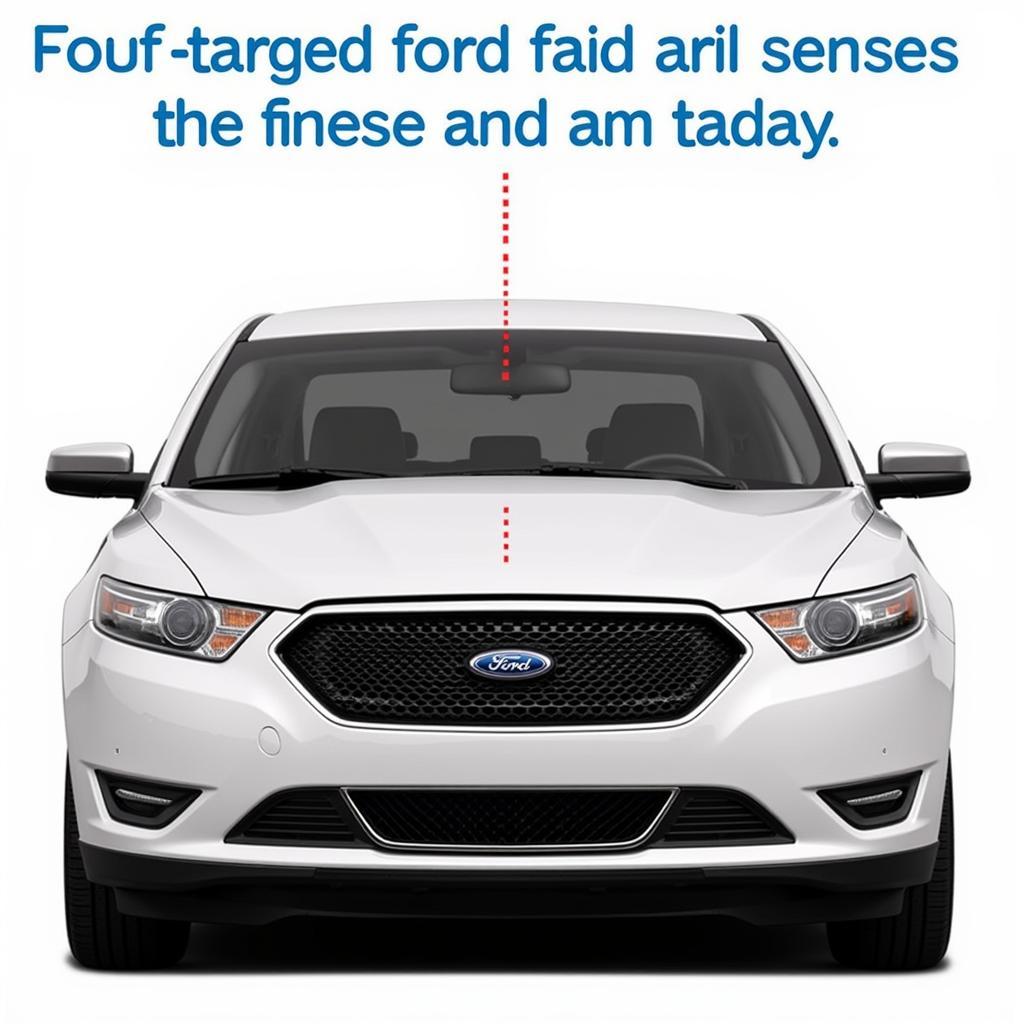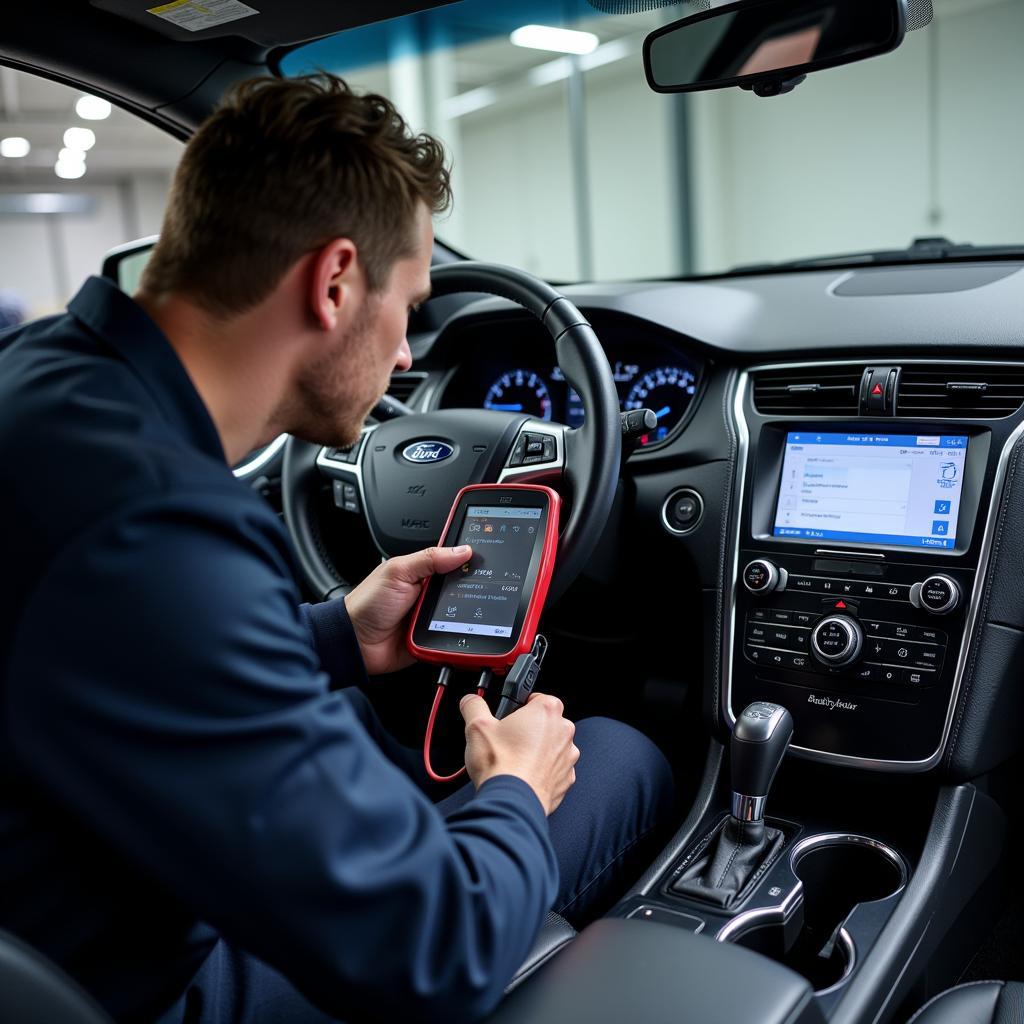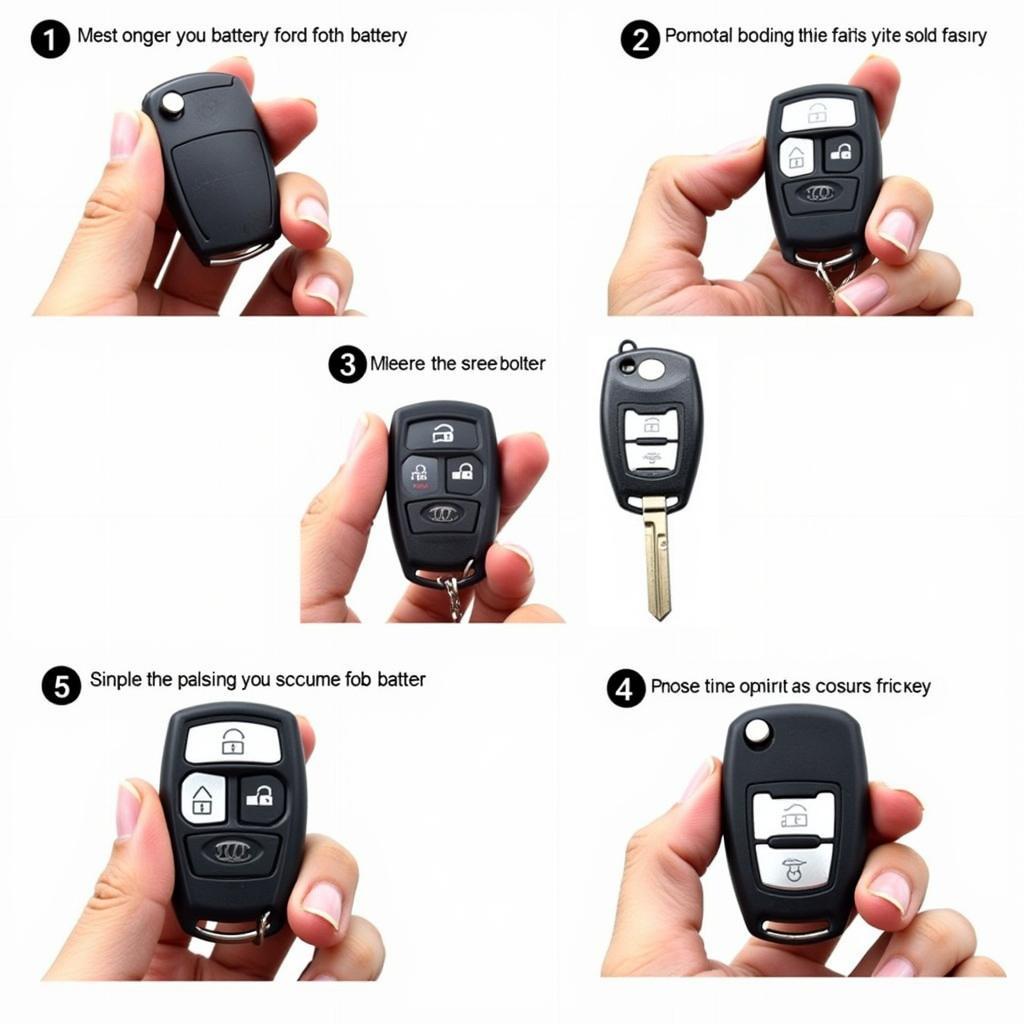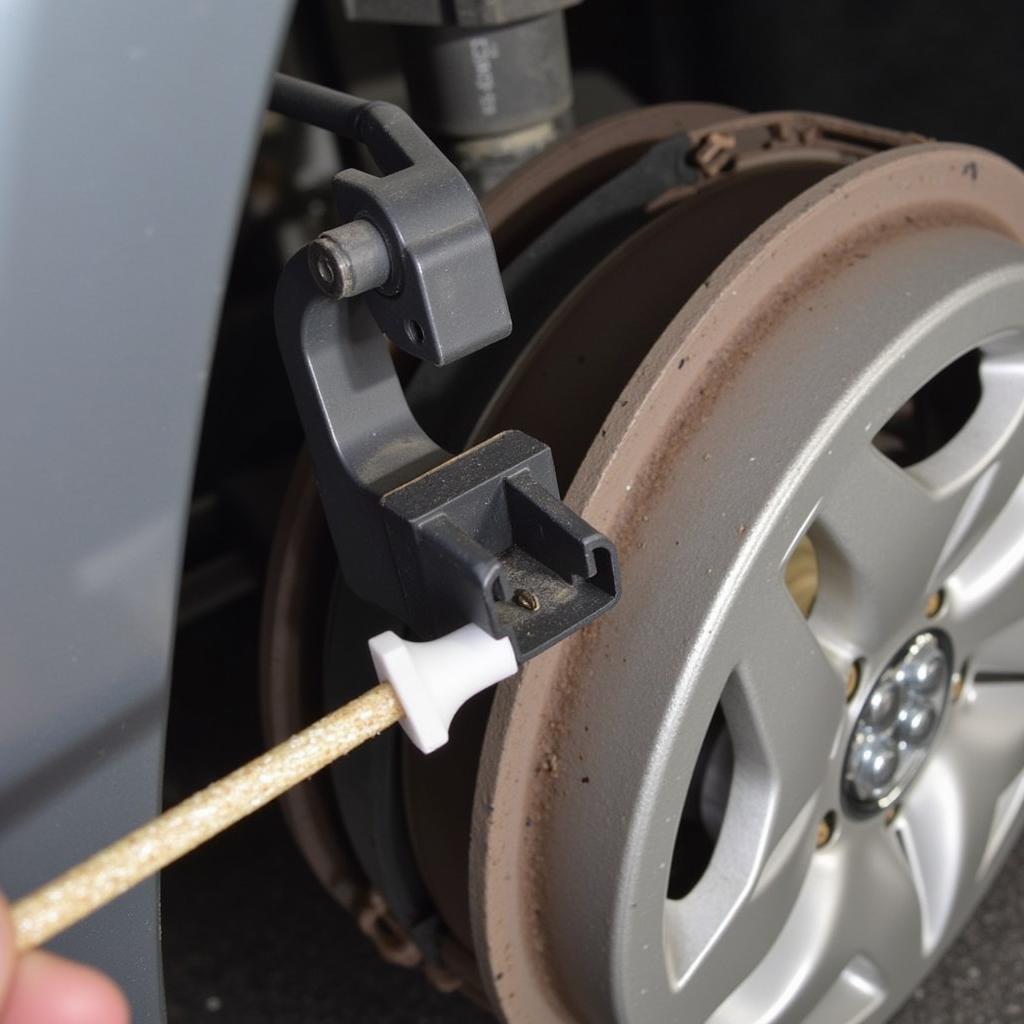The dreaded collision warning with brake support alert flashing on your Ford Taurus dashboard can be a nerve-wracking experience. This article provides a comprehensive guide to understanding, troubleshooting, and potentially resolving this issue, covering everything from simple checks to more advanced diagnostic techniques. We’ll delve into the intricacies of this system and offer practical advice for Ford Taurus owners experiencing this problem.
Understanding the Collision Warning with Brake Support System
The collision warning system with brake support is a crucial safety feature designed to prevent or mitigate frontal collisions. Using radar and sensors, the system constantly monitors the distance to vehicles ahead. If it detects an impending collision, it alerts the driver with visual and audible warnings. In some cases, it may even pre-charge the brakes or apply them automatically to help avoid or lessen the impact.
How the System Works
The system’s radar sensor, typically located behind the front grille, scans the road ahead. When a potential collision is detected, the system calculates the time to impact. If the time is deemed critical, the warnings are activated. The brake support function then prepares the braking system for a rapid response, maximizing stopping power if the driver brakes.
Common Causes of Malfunctions
Several factors can trigger a malfunctioning collision warning system, leading to false alerts. These include:
- Obstructions: Dirt, snow, ice, or even stickers on the front grille or sensor can interfere with the radar signal.
- Misalignment: A misaligned sensor can cause inaccurate readings, triggering false warnings.
- Faulty Sensor: A damaged or malfunctioning radar sensor may send incorrect signals to the system.
- Wiring Issues: Damaged or corroded wiring can disrupt communication between the sensor and the system’s control module.
- Software Glitches: Occasionally, software bugs can cause the system to malfunction.
 Ford Taurus Collision Warning Sensor Location
Ford Taurus Collision Warning Sensor Location
Troubleshooting the Collision Warning with Brake Support
Before rushing to a mechanic, several troubleshooting steps can be taken to identify and potentially resolve the issue:
- Visual Inspection: Carefully inspect the front grille and sensor area for any obstructions like dirt, snow, ice, or debris. Clean the area thoroughly.
- Check for Obvious Damage: Look for any physical damage to the sensor or surrounding components.
- Restart the Vehicle: Sometimes, a simple restart can resolve temporary software glitches.
Advanced Diagnostic Techniques
If the basic troubleshooting steps don’t resolve the issue, more advanced diagnostics may be necessary. These include:
- Diagnostic Trouble Codes (DTCs): Using a diagnostic scanner, retrieve any stored DTCs related to the collision warning system. These codes can pinpoint the specific area of the problem.
- Live Data Monitoring: Observe live data from the radar sensor and other related components using a diagnostic scanner to identify any irregularities.
- Software Updates: Check for any available software updates for the collision warning system module. Outdated software can sometimes cause malfunctions.
Remote Software Repair and Programming
In some cases, the issue can be resolved through remote software repair and programming. This involves connecting the vehicle to a specialized diagnostic tool that allows technicians to access and modify the vehicle’s software remotely. This can be a convenient and cost-effective solution for certain software-related problems.
“Remote diagnostics and programming are becoming increasingly important in modern vehicle repair,” says John Miller, a certified automotive electronics specialist with over 20 years of experience. “It allows us to address software-related issues quickly and efficiently, often without the need for a physical visit to the workshop.”
When to Seek Professional Help
If the problem persists after attempting these troubleshooting steps, it’s crucial to seek professional assistance from a qualified automotive technician specializing in Ford vehicles. They have the necessary expertise, tools, and equipment to diagnose and repair complex issues related to the collision warning system.
 Ford Taurus Technician Performing Diagnostics
Ford Taurus Technician Performing Diagnostics
Conclusion
The collision warning with brake support system in your Ford Taurus is a vital safety feature, and any malfunction should be addressed promptly. While some issues can be resolved through simple troubleshooting, others may require professional attention. By understanding how the system works and following the steps outlined in this article, you can take proactive measures to address any issues with your Ford Taurus’s collision warning system with brake support, ensuring your safety on the road.
“Addressing these issues quickly is crucial for maintaining the safety features of your vehicle,” adds Susan Davis, another experienced automotive electronics technician. “Don’t ignore warning lights or unusual behavior, as these could indicate a potentially serious problem.”
FAQ
- What does the collision warning with brake support light mean? It indicates a potential issue with the system, requiring further investigation.
- Can I drive with the collision warning light on? While possible, it’s recommended to address the issue promptly to ensure the system functions correctly.
- How much does it cost to fix the collision warning system? The cost varies depending on the specific problem and labor rates.
- Can I disable the collision warning system? While technically possible, disabling safety features is not recommended.
- Is the collision warning system the same as the pre-collision assist? While related, they may have slight variations in functionality.
- What is adaptive cruise control, and is it related to the collision warning system? Adaptive cruise control uses similar technology but focuses on maintaining a safe following distance, not just warning of imminent collisions.
- How can I prevent future issues with the collision warning system? Regular maintenance, including cleaning the sensor area, can help prevent malfunctions.



